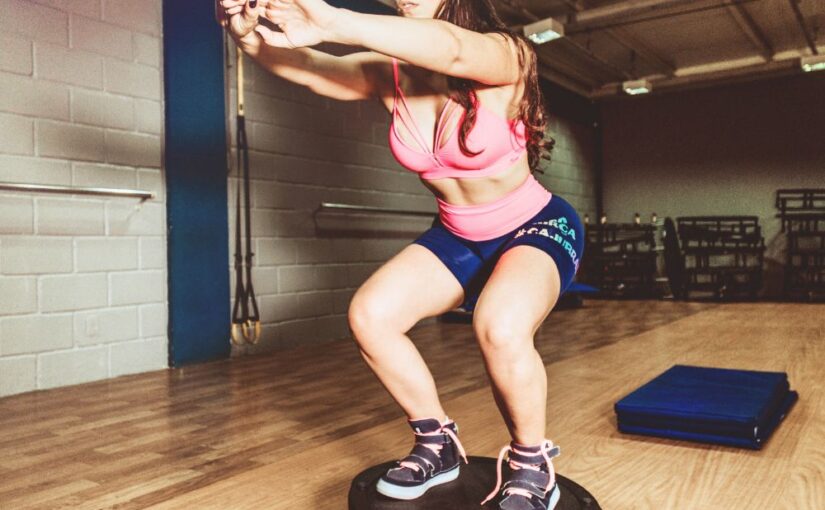Balance plays a vital role in physical fitness, influencing daily movements, athletic performance, and reducing the risk of injuries. Whether you’re an athlete, an older adult, or someone looking to boost your overall fitness, incorporating balance exercises into your routine can significantly improve balance and stability over time.
Why Balance Matters
- Injury Prevention: Good balance reduces the risk of falls and injuries, particularly in older adults.
- Improved Athletic Performance: Enhanced coordination and stability can significantly improve performance in sports.
- Functional Movement: Better balance leads to better performance in daily activities including walking, climbing stairs, and carrying goods.
Effective Balance Exercises
Below are some exercises that can help improve balance and stability:
1. Single-Leg Stand
- How to Do It: Stand on one leg for roughly 20-30 seconds. Close your eyes or stand on a soft surface to make the exercise more difficult.
- Benefits: Strengthens the ankle and improves proprioception.
2. Heel-to-Toe Walk
- How to Do It: Place the heel of one foot squarely in front of the toes of the other as you walk in a straight line. Focus on maintaining a straight line.
- Benefits: Enhances coordination and stability.
3. Balance Board or Bosu Ball Exercises
- How to Do It: Stand on a balance board or Bosu ball and keep your balance. Try squats or reaching exercises while balancing.
- Benefits: Engages core muscles and challenges stability.
4. Chair Stand
- How to Do It: While sitting on a chair, stand up without using your hands. Sit back down and repeat.
- Benefits: Strengthens leg muscles and improves functional balance.
5. Tai Chi
- How to Do It: Join a Tai Chi class or follow an online video featuring slow, controlled movements and postures.
- Benefits: Enhances flexibility, balance, and mindfulness.
6. Lunges
- How to Do It: Step forward with one leg into a lunge position, ensuring your knee is above your ankle. Alternate legs.
- Benefits: Strengthens lower body muscles while improving balance.
7. Side Leg Raises
- How to Do It: Stand next to a wall or chair for support. Lift one leg out to the side, hold briefly, then lower it back down. Repeat on the other side.
- Benefits: Strengthens hip muscles and improves lateral stability.
8. Yoga Poses
- How to Do It: Incorporate balance-focused poses like Tree Pose, Warrior III, or Half Moon into your routine.
- Benefits: Enhances flexibility, strength, and concentration.
How Often to Practice Balance Exercises
Aim to include balance exercises in your routine at least 2-3 times a week. Start with short sessions (10-15 minutes) and gradually increase the duration as your balance improves.
Tips for Improving Balance
- Focus on Form: Prioritize proper technique to prevent injury and maximize benefits.
- Challenge Yourself: Gradually increase the difficulty of exercises as your balance improves.
- Use Support if Needed: Utilize a wall, chair, or sturdy object for support when starting out.
- Stay Consistent: Regular practice is key to improving balance over time.
- Integrate into Daily Life: Incorporate balance activities into your daily routine, such as standing on one leg while brushing your teeth.
Conclusion
Improving balance is essential to overall health and fitness. By incorporating these exercises into your routine, you can improve balance and stability, lower your risk of injury, and boost performance in both daily activities and sports. Whether you’re a beginner or more advanced, there’s a balance exercise suited to every fitness level.
Frequently Asked Questions (FAQ)
Improving balance enhances stability, reduces the risk of falls, and boosts overall coordination, making everyday activities and sports easier and safer.
To see noticeable improvements, aim to practice balance exercises at least 2-3 times a week for 10-15 minutes per session.
Yes! Stronger balance helps protect against falls and injuries, especially in older adults or athletes looking to enhance performance and reduce strain.
Absolutely! Many balance exercises, such as standing on one leg or using a chair for support, are perfect for beginners and can be gradually intensified.
While results vary, consistent practice over a few weeks can lead to noticeable improvements in balance and stability, especially if you challenge yourself gradually.

